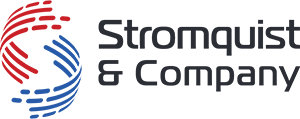

Building Automation Controller
Build IoT with Easy Automation with the - ILC 2050
Resources
The ILC 2050 BI industrial Niagara controller offers I/O modularity, integrated security, and a flexible software-licensing model. This makes the controller ideal for the most demanding applications in buildings, infrastructure, and data centers. The integrated Niagara Framework® enables IIoT-based automation through standardization of various data types. This makes it easy to connect with various sensors and actuators regardless of the manufacturer and communication protocol.
Niagara for the Industrial Environment
Robust and high-speed control for the most demanding applications using the
Niagara 4 Framework. Go beyond building automation with the ILC 2050 BI providing
industrially hardened control and modular I/O running the Niagara 4 Framework.
Have you ever needed to use the Niagara framework in critical applications where having more robust hardware is important, while also keeping the size of your cabinet at a minimum? In this video, Jordyn Dahlke discusses the ILC 2050 BI, Phoenix Contact’s Niagara-based controller, and how it fills all the extra requirements for an optimized Niagara framework.
The powerful ILC 2050 BI controller is specially designed for automation tasks in buildings. The extension with a large number of I/O components from the Inline system ensures the easy setup of a modular automation station for practically all tasks in the building infrastructure environment. In particular, these include controlling and monitoring the building infrastructure, and energy management. The corresponding software makes the automated building IoT capable without effort.
- Easy programming with the graphical build-up of control functions from a large library of ready-to-use blocks
- Support for all of the main communication protocols in the field of building infrastructure automation technology
- Possibility of live engineering without interrupting ongoing operation
- Safeguard cost-efficient operation with remote access for programming, monitoring, software updates, and functional extensions
- Secure operation with consistent encryption in the network, digital signaling, and authentication based on various user roles


Integration
The controller is based on the powerful Niagara framework. The key advantage here is the unified connection of various bus systems and protocols on the field level through data standardization. For this, there are numerous communication drivers for classic systems such as Modbus/RTU, BACnet MS/TP, and LON TP/FT10, as well as support for IP-based protocols such as Modbus/TCP, BACnet/IP, and KNXnet/IP. Naturally, building-specific protocols such as DALI, M-Bus, SMI, and others are also supported. The integrated network function ensures that all data points are very easily available anywhere within an overall system comprised of several controllers. External data exchange is possible using IoT protocols such as MQTT and OPC UA, among other methods.

Flexible Licensing
A license is required for each controller. The basic version includes 100 data points and the support of numerous protocols. With extended licenses, the number of data points can be increased to up to 10,000. Driver licenses are available to extend the functional scope of the controller to include additional protocols. We recommend maintenance licenses to ensure that you benefit from software updates and new functions. These licenses are available with a runtime of one, three, or five years. A new release is issued twice per year.

Supervisor & Workbench
A supervisor is a server-based automation station for superordinate tasks in a network, comprised of several type ILC 2050 BI controllers. With this, the central logging and aggregation of data points and a central alarm management and scheduling system are possible.
The supervisor realizes complex visualizations and simplifies integration into superordinate systems. It takes over central administration tasks such as rolling out software updates, as well as user and certificate management in the network. Moreover, it can independently implement control tasks with data points that are made available via TCP/IP-based protocols.

Modular I/O Available
Analog, Digital, & Special Function I/O

